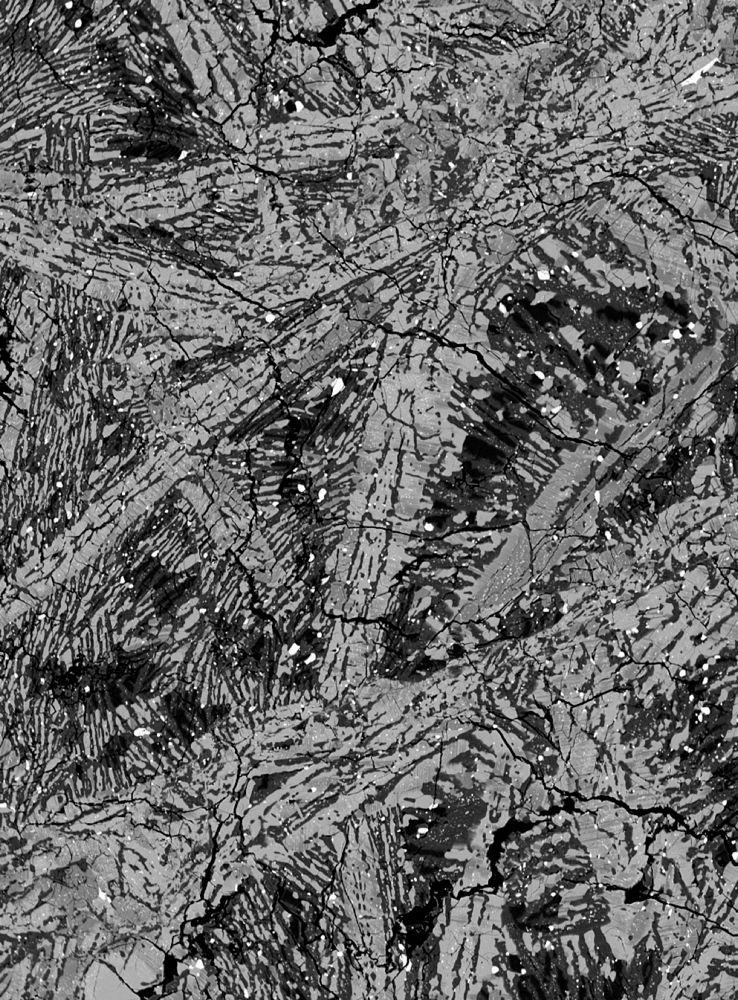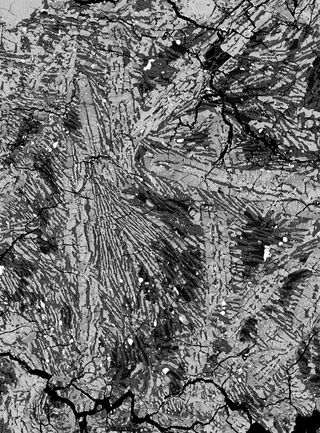Shiny Asteroid Vesta Once Had Magnetic Personality

Vesta, the brightest asteroid in the solar system, apparently possessed a magnetic field in its infancy that shielded it from the ravages of energetic particles from the sun, researchers say.
The finding could help solve the mystery of why Vesta's surface appears so bright, they add.
Vesta is the second-largest asteroid in the solar system, a behemoth 330 miles wide (530 kilometers) that is sometimes visible to the naked eye on Earth. The only larger asteroid is Ceres, which is also classified as a dwarf planet.
Recent evidence suggests that, like Earth, Vesta is divided into a core, mantle and crust, supporting the theory that the giant asteroid is protoplanetary material known as a planetesimal that never fully developed into a planet. Recent scans from NASA's Dawn spacecraft hint that Vesta's metallic core is about 135 miles (220 km) wide and takes up 5 percent to 25 percent of its total mass. [Latest Photos of Asteroid Vesta]
Vesta occasionally experiences collisions, probably with other members of the solar system's main asteroid belt, which lies between the orbits of Mars and Jupiter. These impacts can knock rocks off Vesta, with some of them plummeting to Earth as meteorites.
For the new study, scientists analyzed samples from a shiny black meteorite recovered in 1981 in hills at the end of the Transantarctic Mountains in Antarctica. The rock's oxygen isotope levels matched those astronomers have seen on Vesta, suggesting it originated on that asteroid long ago.
Magnetized crystals within the meteorite suggest Vesta once had a magnetic field strong enough to leave an imprint on its surface rocks. Argon isotopes within the meteorite help pin down its age, suggesting the asteroid's crust was still magnetized 3.69 billion years ago. (If Vesta had a magnetic field, it probably died well before that, once Vesta's core cooled and slowed.)
Get the Space.com Newsletter
Breaking space news, the latest updates on rocket launches, skywatching events and more!
The researchers suggest Vesta had a spinning liquid metallic core early in its history. This apparently generated a dynamo, resulting in a magnetic field at least 2 microteslas in strength and perhaps as strong as 10 to 100 microteslas. In comparison, Earth's surface magnetic field is about 30 to 60 microteslas.
"Up to now, it was uncertain if small bodies like asteroids could harbor a dynamo like that observed on larger planets such as Earth," lead study author Roger Fu, a planetary scientist at the Massachusetts Institute of Technology, told SPACE.com. "It's good to be able to confirm models that said it was possible."

The researchers think Vesta's ancient magnetic field may have shielded the asteroid from scouring by winds of electrically charged particles from the sun. This could help explain why its surface is so bright— the solar wind normally would darken the asteroid over time.
These findings could help researchers learn more about how the building blocks of the rocky planets grew and evolved.
"Earth and the other terrestrial planets are made of objects like Vesta," Fu said. "The coolest thing to me is that we're learning more and more about planetesimals, about this critical stage in the early solar system."
Fu and his colleagues plan on looking at ancient meteorites to see if magnetic fields were present before even planetesimals formed in the solar system's protoplanetary disk. They detail their findings in the Oct. 12 issue of the journal Science.
Follow SPACE.com for the latest in space science and exploration news on Twitter @Spacedotcom and on Facebook.
Join our Space Forums to keep talking space on the latest missions, night sky and more! And if you have a news tip, correction or comment, let us know at: community@space.com.

Charles Q. Choi is a contributing writer for Space.com and Live Science. He covers all things human origins and astronomy as well as physics, animals and general science topics. Charles has a Master of Arts degree from the University of Missouri-Columbia, School of Journalism and a Bachelor of Arts degree from the University of South Florida. Charles has visited every continent on Earth, drinking rancid yak butter tea in Lhasa, snorkeling with sea lions in the Galapagos and even climbing an iceberg in Antarctica. Visit him at http://www.sciwriter.us
Most Popular

